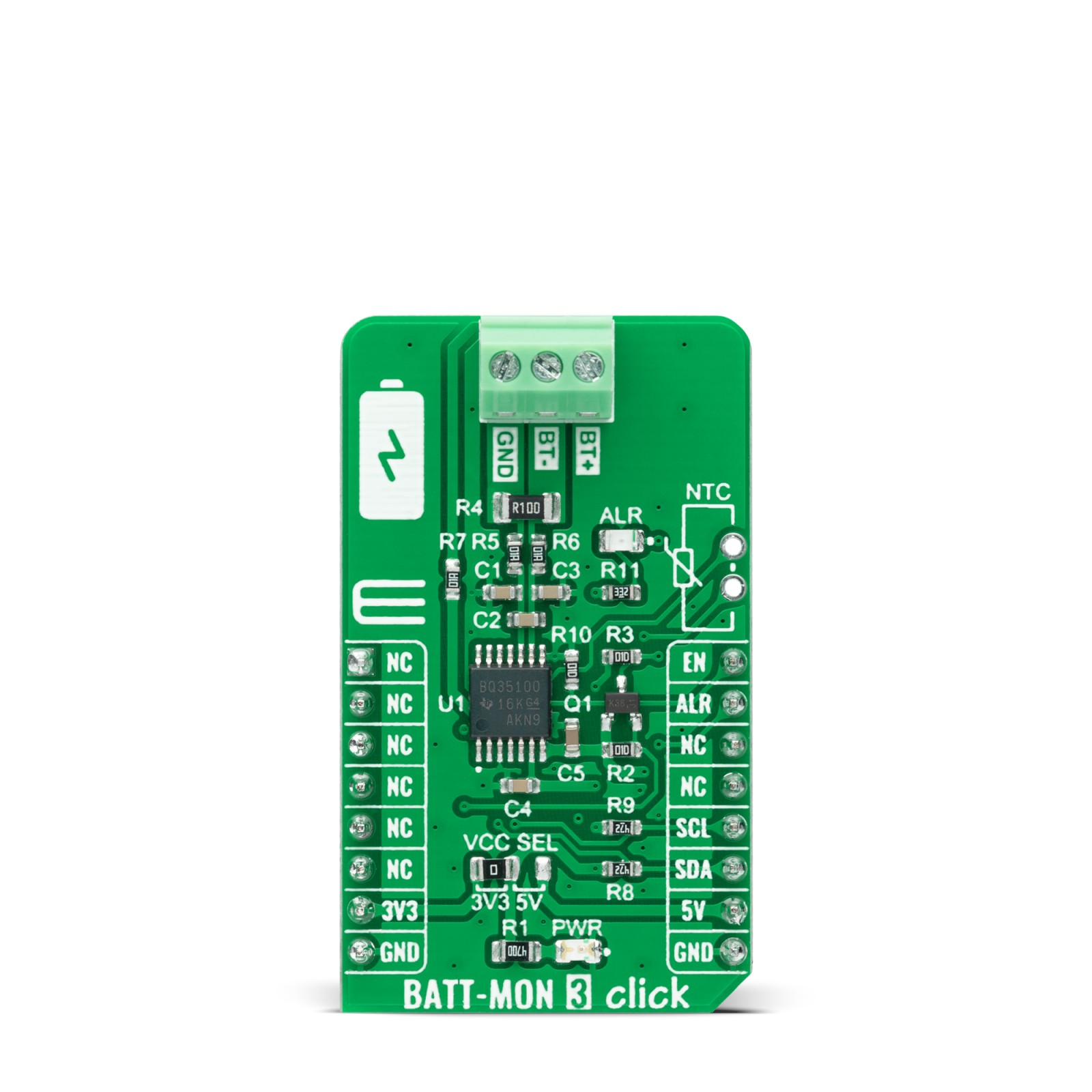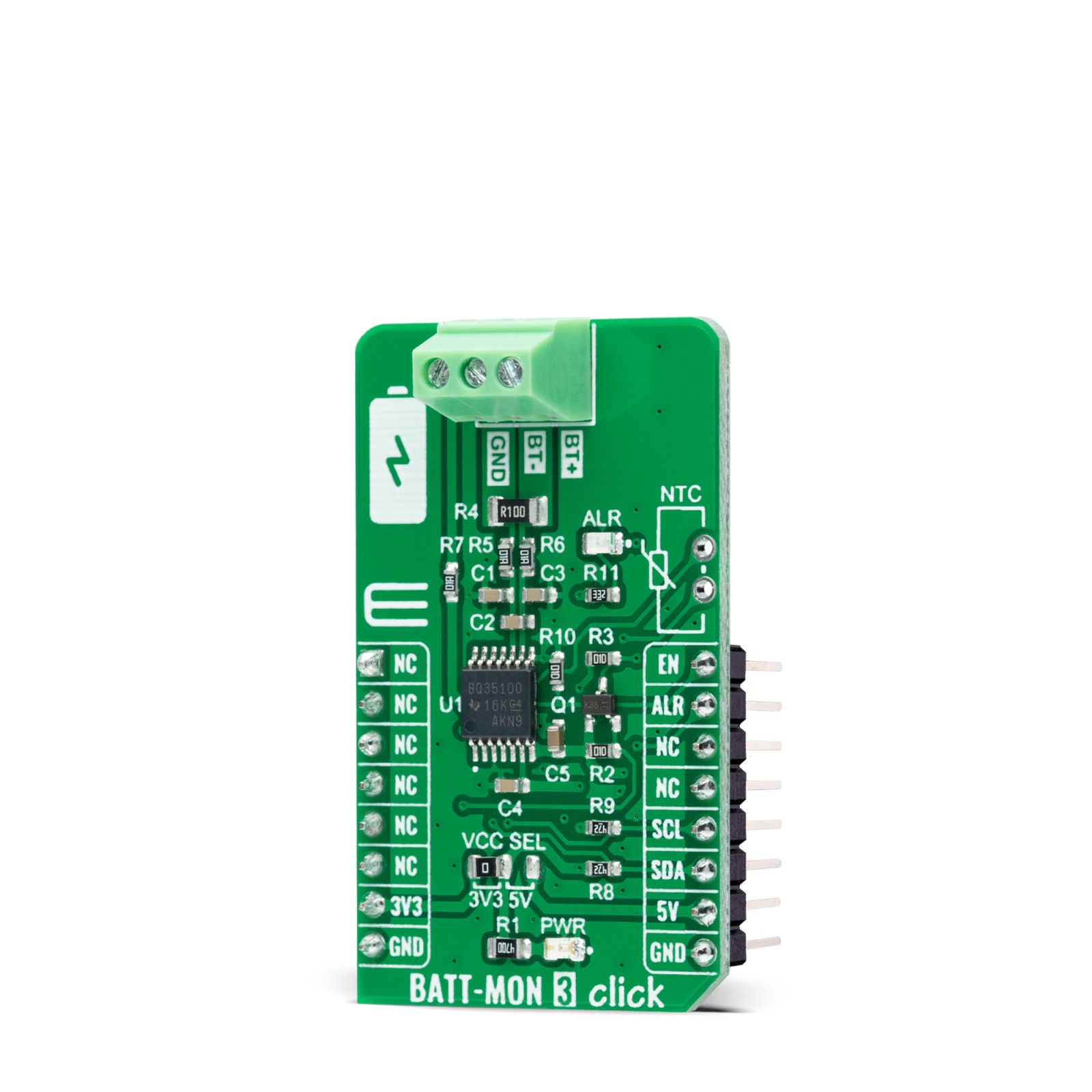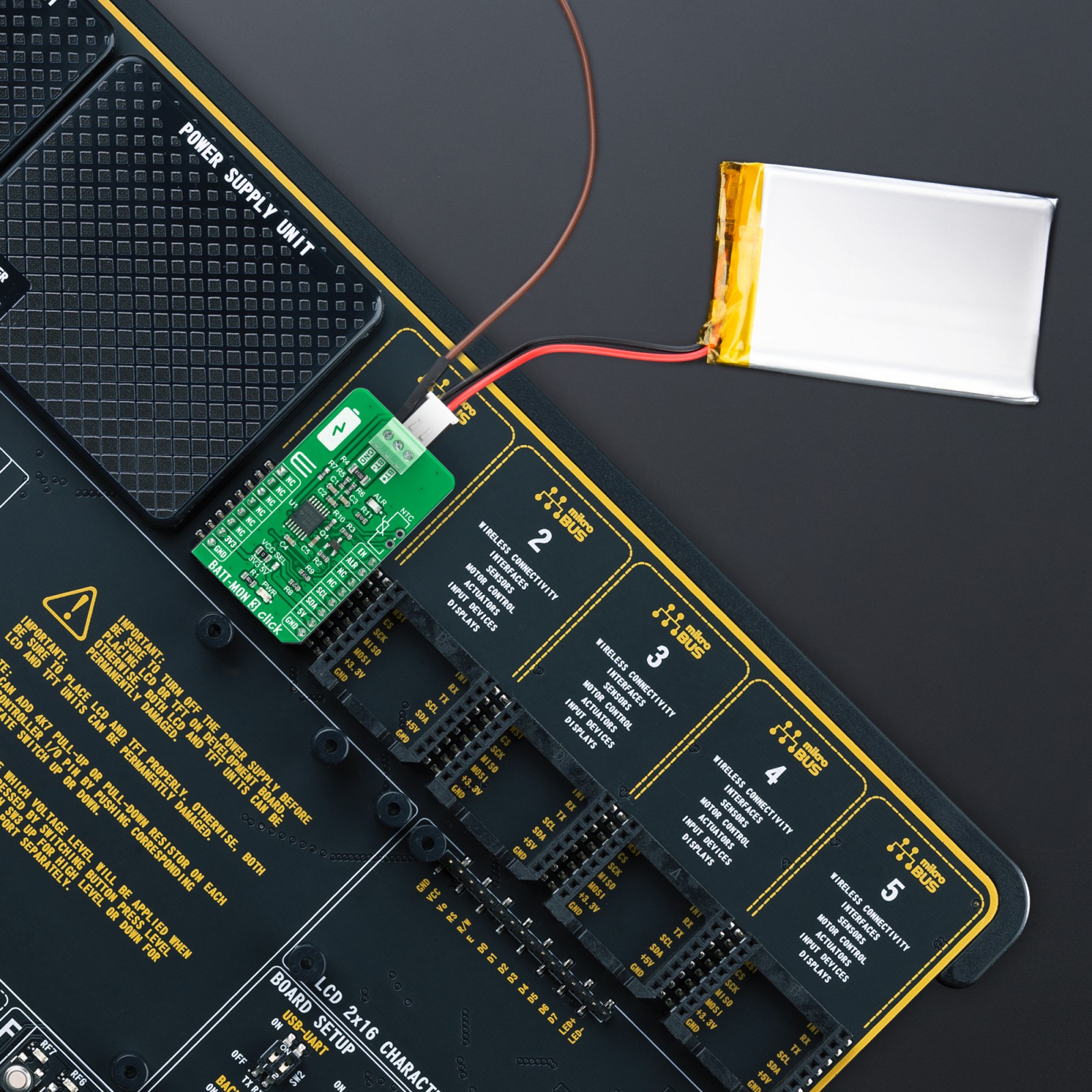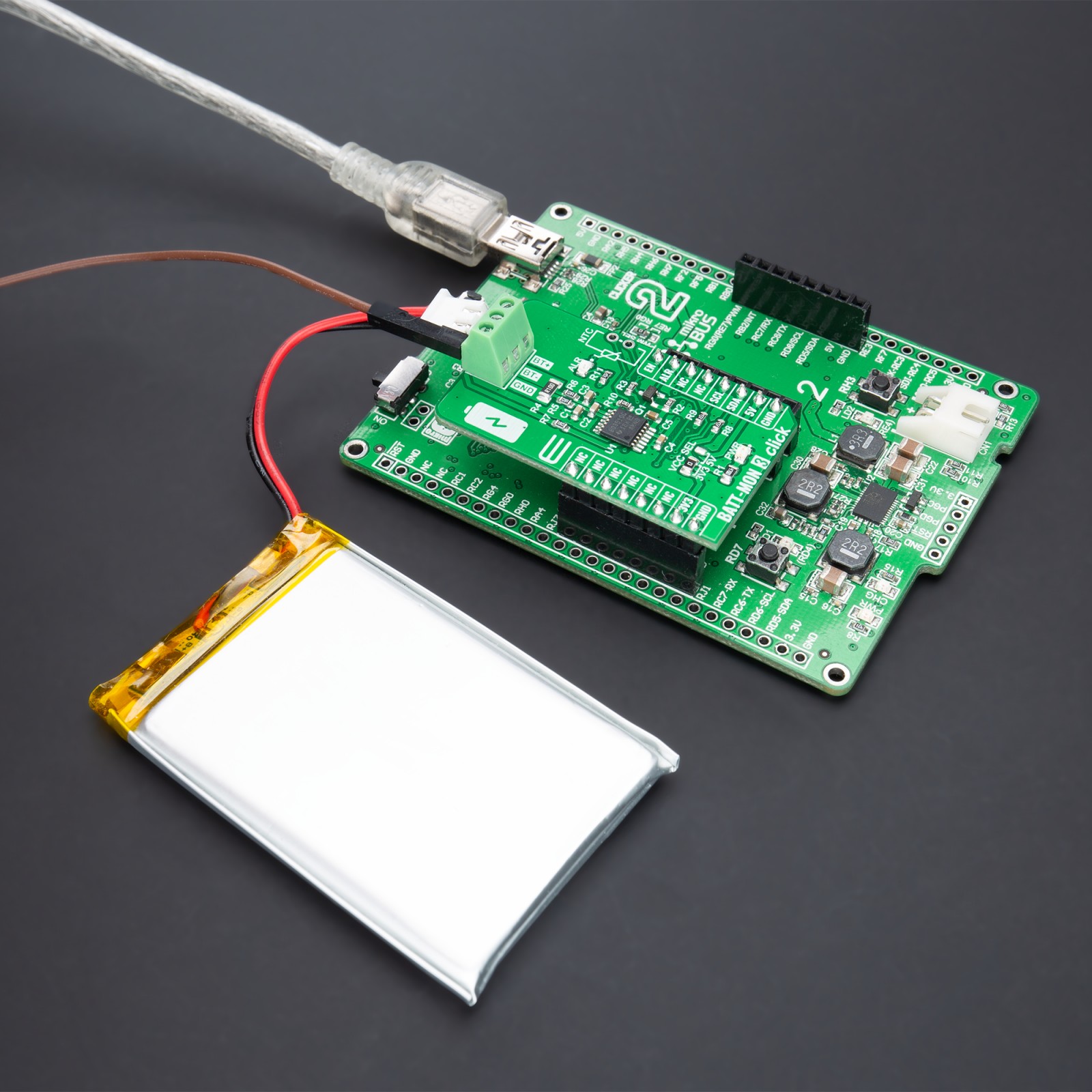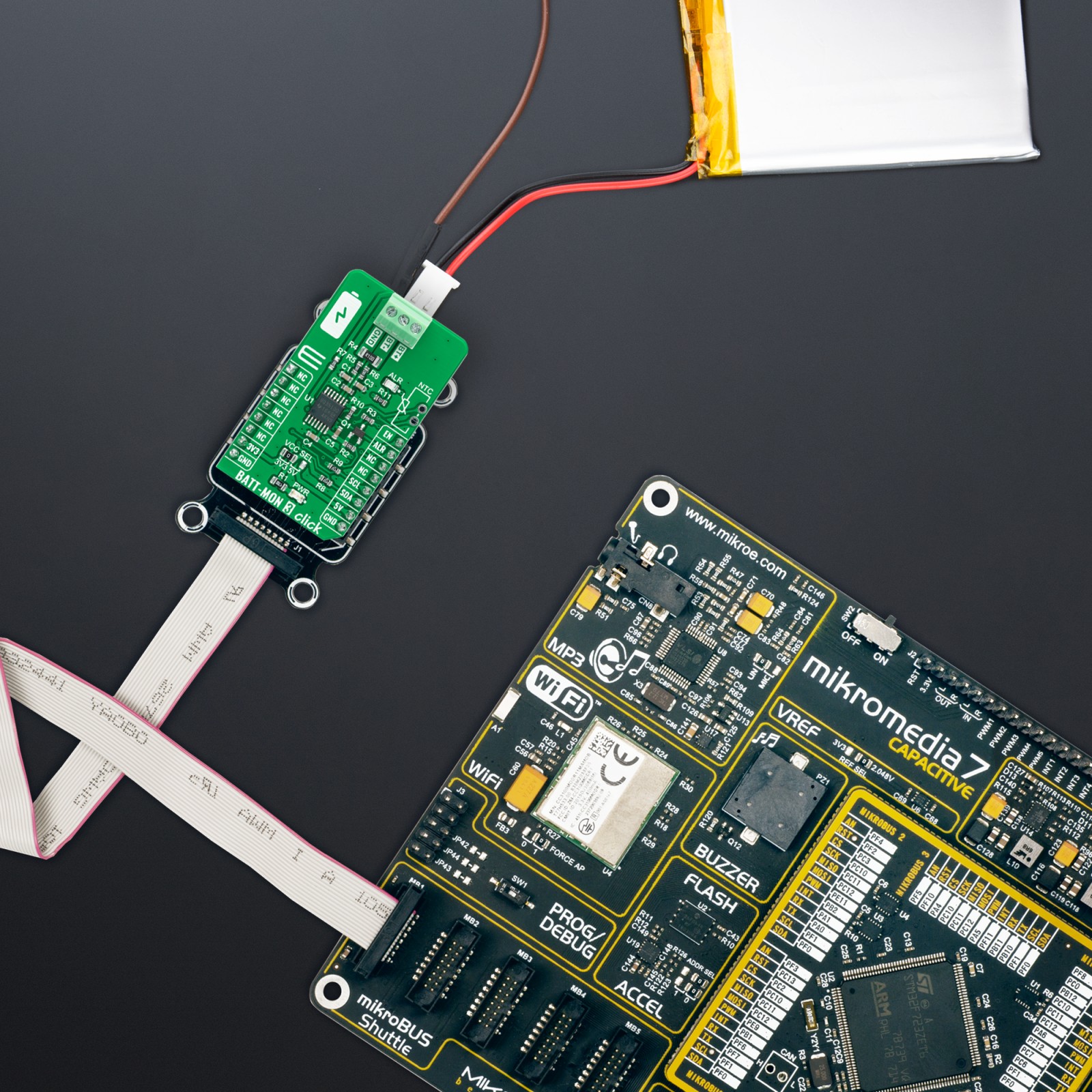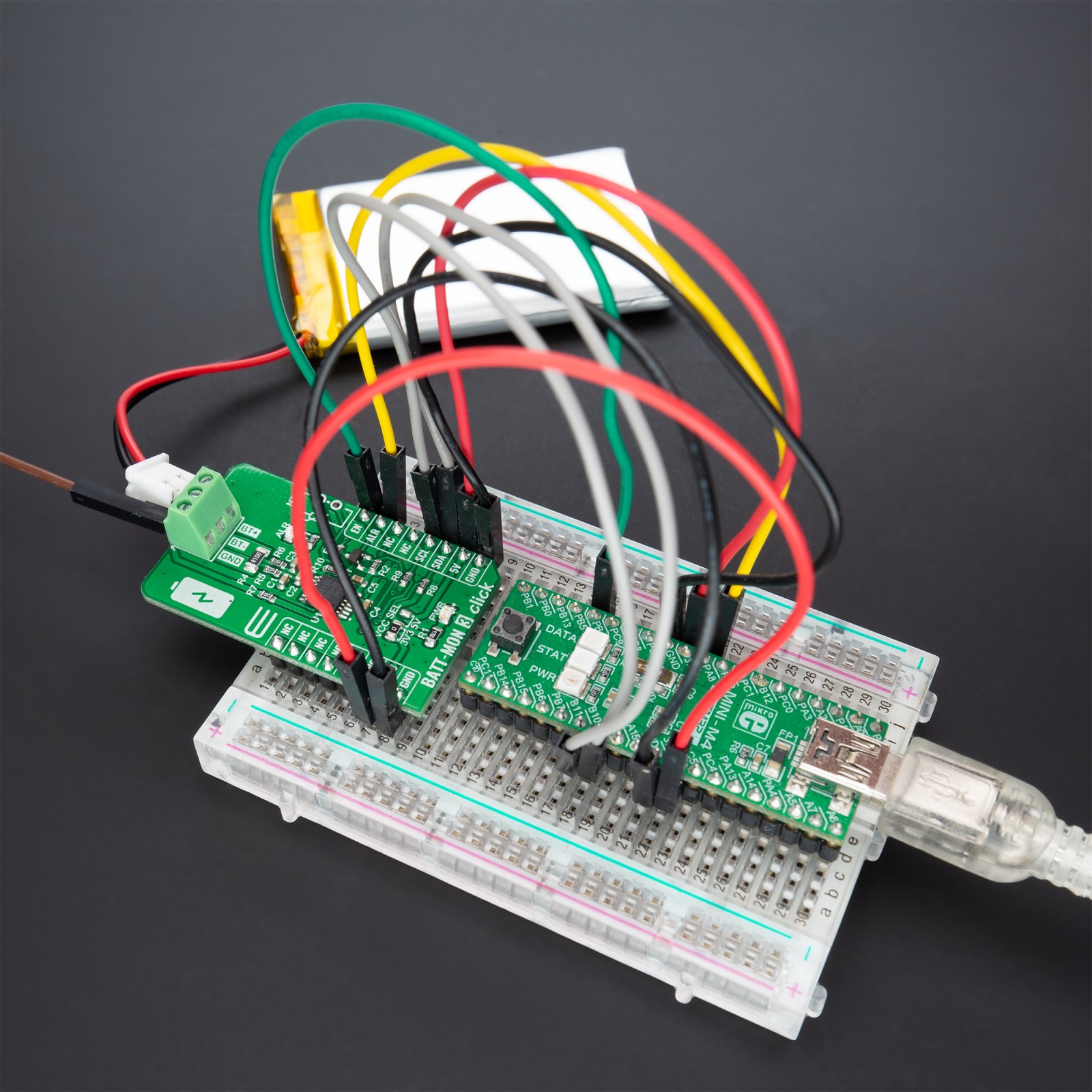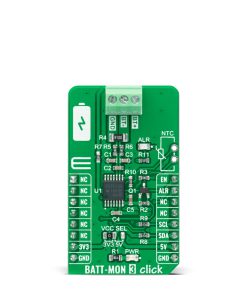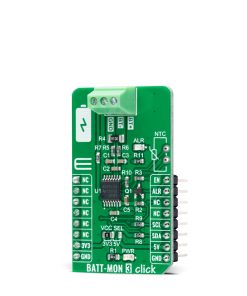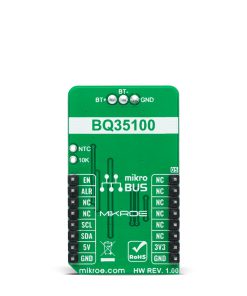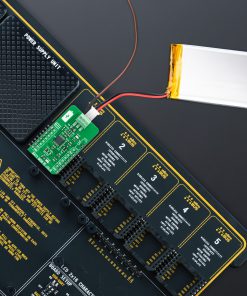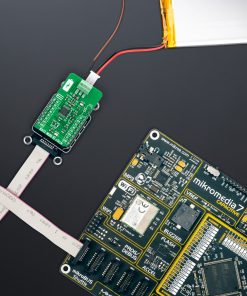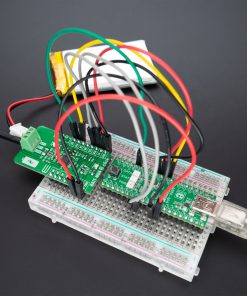BATT-MON 3 Click
R300.00 ex. VAT
BATT-MON 3 Click is a compact add-on board representing an advanced battery monitoring solution. This board features the BQ35100, battery fuel gauge, and end-of-service monitor from Texas Instruments. The BQ35100 provides highly configurable fuel gauging for non-rechargeable (primary) lithium batteries without requiring a forced battery discharge. It uses patented TI gauging algorithms to support the option to replace an old battery with a new one seamlessly. It provides accurate results with ultra-low average power consumption, alongside an I2C interface through which the host can read the gathered data. This Click board™ can be used in battery systems suitable for dynamic load and large ambient temperature change applications, for battery status reporting and diagnostics with early failure detection for flow meter systems, or to extend battery run-time with accurate battery gauging in various applications.
BATT-MON 3 Click is supported by a mikroSDK compliant library, which includes functions that simplify software development. This Click board™ comes as a fully tested product, ready to be used on a system equipped with the mikroBUS™ socket.
Stock: Lead-time applicable.
| 5+ | R285.00 |
| 10+ | R270.00 |
| 15+ | R255.00 |
| 20+ | R245.40 |

